Weight-loss drugs cut alcohol intake by almost two-thirds, research in Ireland suggests
Powered by WPeMatico
Powered by WPeMatico
Powered by WPeMatico
Powered by WPeMatico

Bhubaneswar: In a shocking case of cyber fraud, the Crime Branch of Odisha Police has arrested three people from West Bengal for allegedly cheating a doctor of Rs 6.04 crore by luring him with promises of high returns on stock market investments.
The accused have been identified as 53-year-old Ashok Nanda from Siliguri, 38-year-old Jayarani Basak from Kolkata and 28-year-old Tapas Halder from Ultadanga. According to the Police, Ashok runs a hotel business. Both were arrested recently and are being brought to Odisha for further investigation.
Also read- 2 Doctors arrested for duping FMGE aspirant of Rs 26 lakh
TNIE has reported that the case was registered in January after the doctor filed a complaint. He said he got in touch with the accused through Telegram and WhatsApp groups. They convinced him to invest in stock market schemes, claiming he would earn huge profits from IPOs and other trades.
Trusting them, the doctor transferred over Rs 6 crore from eight different bank accounts belonging to him and his associates over a period of just 3.5 months. The money was deposited into 22 bank accounts, police said.
During the investigation, CB found that the fraudsters had further transferred the money to other bank accounts and had then withdrawn it using cheques and ATMs.
“The cyber fraudsters had assured the complainant that he would receive hefty returns through investments in initial public offerings and over-the-counter tradings but they later swindled his money. While Ashok had directly received around Rs 1.11 crore in his bank account, around Rs 6 lakh was found to have been transferred to Jayarani’s account by Ashok,” said a CB officer.
The arrested person, Tapas Haldar, was produced before the Court of ACJM, Sealdah, and later brought on remand to Odisha. He was presented before the SDJM Court in Bhubaneswar on Thursday, reports omcomnews.
The police have seized mobile phones, SIM cards, and ID proofs, including PAN and Aadhaar cards, bank passbooks, cheque books, debit cards and more from the duo. Several bank accounts linked to the fraud have already been frozen.
“The investigation is ongoing. Our team is committed to identifying other accomplices, tracing the trans-India network of this crime, and following the money trail,” the press release stated.
The Odisha Crime Branch has also urged citizens to remain vigilant against unsolicited investment offers on social media and messaging platforms. It advised the public to verify such schemes before investing and to report any suspicious activity to the Cyber Helpline (1930) or the nearest police station.
Medical Dialogues recently reported that a Kolkata-based doctor allegedly lost Rs 1 crore after being threatened with a digital arrest in a fake money laundering case. The police have identified and arrested three fraudsters involved in the scam. The three accused were reportedly part of a racket that operates with the same modus operandi. They allegedly target people with a good financial background and extort money by threatening them.
Also read- Threatened with Digital Arrest, Kolkata doctor loses Rs 1 crore in cyber fraud
Powered by WPeMatico
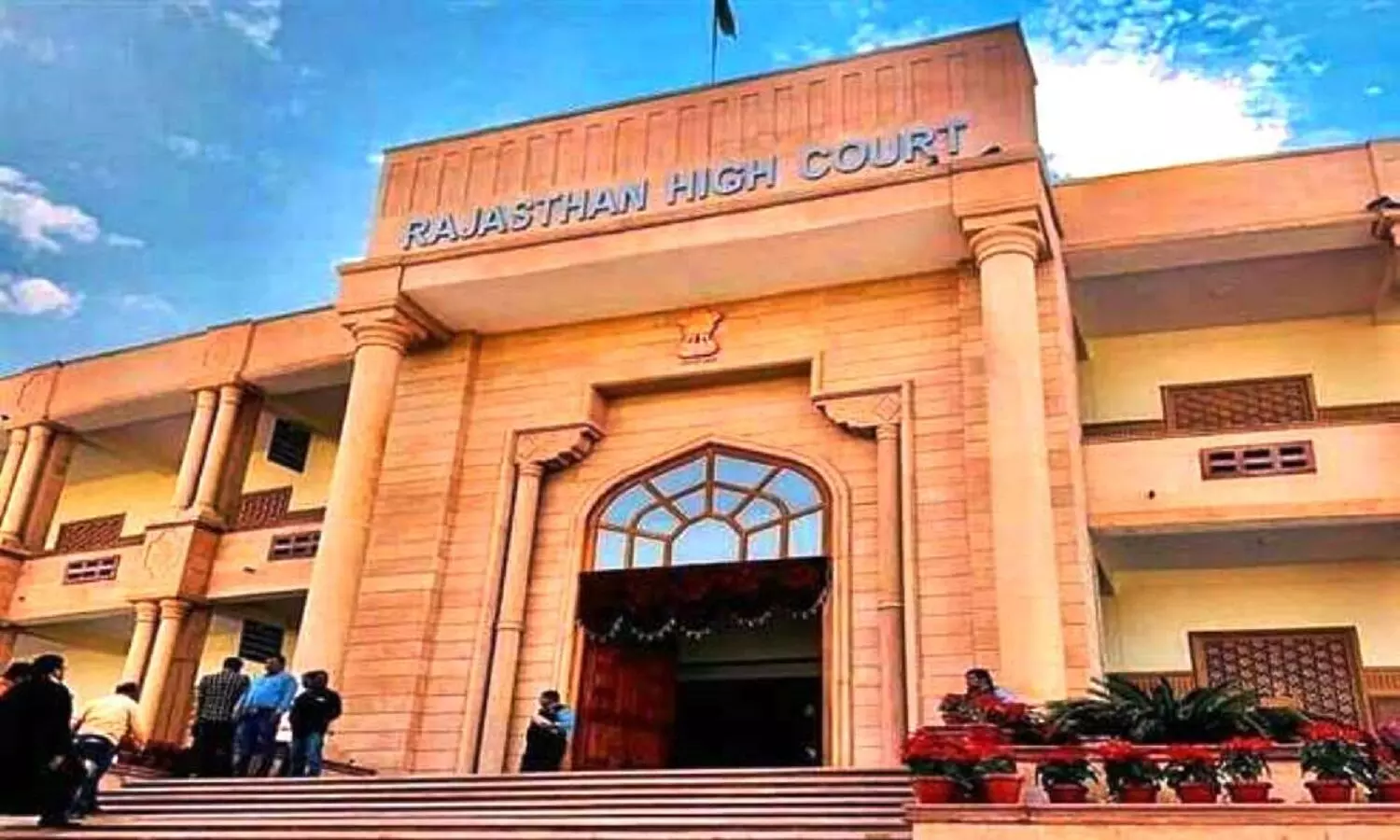
Jodhpur: Granting relief, the Rajasthan High Court recently quashed the FIR against doctors booked for medical negligence during the treatment of a patient, who died after getting admitted for a minor uterine fibroid surgery.
While granting relief to the accused doctors, the HC bench comprising Justice Farjand Ali observed that it would be wrong to assume that a doctor or an institute would deliberately risk their reputation by engaging in rash and negligent medical practices.
“Moreover, this Court is also mindful of the fact that the reputation and functional credibility of private medical institutions are inherently tied to their standards of care and patient outcomes. In the modern healthcare ecosystem, no private hospital or its professional staff can reasonably be presumed to operate with a wilful disregard for human life, especially when such conduct would directly undermine their institutional standing, public trust, and economic viability. A medical practitioner operating within a private setup is guided not merely by the clinical interest of the patient but also by the ethical and reputational constraints of the institution under whose aegis he functions. It must further be appreciated that a single adverse outcome, if even remotely attributable to a negligent act, has the potential to cause irreparable damage to the professional standing of both the doctor and the hospital. In a sector where public confidence serves as the cornerstone of survival, the mere perception of substandard care can derail years of painstakingly built credibility. Private healthcare institutions operate not just as treatment facilities but as trust-based service entities— heavily reliant on goodwill, word-of-mouth, and community validation,” observed the HC bench
“The inflow of patients, which sustains the operational and financial viability of such institutions, is directly proportional to the public’s perception of their clinical integrity. Consequently, even from a purely pragmatic or commercial standpoint, it defies logic to assume that a doctor or institution would deliberately risk such reputational capital by engaging in rash or negligent medical practices. The risk of professional ruin, economic decline, and eventual institutional collapse acts as a natural deterrent against any willful lapse in the standard of care. Indeed, the very business model of private healthcare is predicated on the maintenance of —professional goodwill and ethical reliability,” the Court noted.
Further, the bench observed,
“The erosion of this trust, through real or perceived negligence, would cause a rapid attrition of patient inflow, leading not only to financial instability but to the eventual dismantling of the entire clinical establishment. Thus, the likelihood of a private medical practitioner, knowingly or recklessly, compromising patient care is not merely implausible—it is antithetical to both professional instinct and institutional self-preservation.”
Therefore, the Court observed that it is “inconceivable” that a licensed and qualified medical professional, having undergone rigorous academic training and extensive clinical exposure over several years, would “intentionally” pursue a line of treatment with the objective of “endangering human life.”
These observations were made by the Court while considering the pleas moved by four doctors praying to quash an FIR under BNS Section 105 (culpable homicide not amounting to murder). It was alleged by the complainant that there was “grave medical negligence” in the treatment of his daughter-in-law, including the omission of pre-operative tests, delayed critical diagnostics and improper post-operative care, which resulted in the death of the complainant’s daughter-in-law, who was admitted to the hospital in Jodhpur for undergoing a minor uterine fibroid surgery.
It was alleged by the complainant that his daughter-in-law was assured of the simplicity of the procedure, and shortly after admission, without comprehensive diagnostic work-up or pre-operative preparedness, she was rushed into the surgery involving “hysteroscopy, laparoscopy, and trans-cervical resection of myoma”.
The complainant contended that essential pre-surgical protocols, including the INR (International Normalized Ratio) test, were not conducted. After the operation, the patients’ condition reportedly deteriorated rapidly, with persistent unconsciousness, yet she was transferred to a general ward without requisite neurological assessment or CT brain imaging.
Further, the complainant alleged that despite signs if severe haemorrhage and administration of multiple blood transfusions, the hospital continued to misrepresent her clinical condition as stable. Later, on 07.09.2024, when the patient’s condition worsened further, she was referred to Marengo CIMS Hospital, Ahmedabad. At the hospital, the patient was immediately diagnosed with critical intracranial haemorrhage confirmed–via CT scan. It was opiend that prior failure to undertake such imaging and timely intervention constituted a breach of medical protocol.
The complainant claimed that a report by a committee constituted under the District Collector’s order also revealed stark inconsistencies between the hospital’s version and the version by the patient’s attendants.
Apart from this, the complainant also asserted that the hospital’s director, later attributed the deteriorated health condition of the patient to a congenital AVM (arteriovenous malformation) and a brain tumour. However, imaging conducted at CIMS Hospital (Ahmedabad) reportedly refuted the presence of any such conditions. Ultimately, the patient passed away on 18.09.2024.
While considering the matter, the HC bench took note of the expert opinions of a State-Level Medical Expert Committee as well as a District-Level Medical Expert Committee. It observed that both of these reports concluded that there was no prima facie evidence of medical negligence.
“It is a trite proposition that when a duly constituted medical board comprising domain experts has opined against the existence of negligence, and when no contra expert opinion has been produced to establish a reckless or impermissible departure from the standard of care, criminal prosecution under Section 105 BNS cannot be sustained. The law requires that for an act to constitute criminal medical negligence, it must transcend mere error of judgment and amount to a gross dereliction of duty, evidencing either mens rea or an utter disregard for patient safety—a threshold not satisfied in the instant case,” the bench observed at this outset.
The Court observed that mere dissatisfaction with the result of the medical treatment could not in itself be a ground for criminal protection unless supported by cogent evidence reflecting gross recklessness or culpable negligence.
“Having regard to the allegations made and the circumstances surrounding the demise of the complainant’s daughter-in-law, this Court is conscious of the settled position of law pertaining to allegations of medical negligence which may give rise to criminal culpability. A mere adverse outcome of a medical procedure does not, ipso facto, constitute medical negligence. A private complainant, lacking in medical expertise, cannot conclusively impute criminal negligence to a medical practitioner solely on the basis of an unfortunate result or post-operative deterioration. The domain of medical negligence squarely falls within the realm of expert knowledge, and the threshold for initiating criminal prosecution against medical professionals is placed significantly high to protect bona fide medical judgment from frivolous or misconceived litigation,” noted the Court.
Regarding the allegations of deliberate suppression of diagnostics or intentional withholding of information by the petitioners, the Court noted,
“Further, it is wholly unreasonable to expect that minute-to-minute details of the ongoing medical procedures or evolving diagnostic considerations would be exhaustively shared with the patient’s attendants, particularly in a high-pressure post-operative setting. Diagnostic reports, including those recommended but not undertaken, are part of the internal clinical deliberations and are generally accessible through proper channels; their nondisclosure to laypersons in real time does not, in and of itself, imply suppression or malafide intent. Allegations of nondisclosure must be evaluated in light of clinical exigencies, standard protocols, and practical limitations faced by the attending staff. Hence, the contention that there was deliberate suppression of diagnostics or intentional withholding of information lacks the evidentiary foundation necessary to invoke criminal liability in a medical negligence framework.”
Regarding the doctor’s role in this case, the Court, after perusing the record observed that it unequivocally reflected that the concerned attending physician, confronted with a critical and dynamically evolving clinical scenario, exercised his judgment in “real time, acting with the singular intent to preserve and restore the patient’s health”.
“The actions undertaken were rooted in his medical wisdom and situational appraisal, not in any form of disregard for the patient’s well-being. Whether the chosen course of treatment ultimately succeeded or failed pertains to the unpredictability inherent in medical science and the complexity of human physiology—not to any criminal malintent. Medical decisions taken within the four walls of an operation theatre are often made under acute pressure, with constrained time and information, and under conditions where immediate response is paramount. It is imperative to recognize that the treating doctor, positioned bedside and bearing direct responsibility, exercises clinical discretion shaped by years of training, personal experience, and the unique circumstances presented by the patient at that precise moment,” the bench observed.
It also observed that the retrospective assertion that “another action should have been taken” or that “a different decision might have yielded a better result” is a manifestation of hindsight bias, and was not a valid metric to assess professional culpability.
“In medical jurisprudence, it is inappropriate—indeed, legally impermissible—to superimpose an idealized course of action derived from post-facto analysis over the real-time decisions made in emergent and lifethreatening situations.The clinical process, particularly in emergency operative settings, is governed not by hypothetical perfection but by a constrained equilibrium of risk and benefit, filtered through the doctor’s best judgment at the time. The standard is not omniscience but reasonableness. It is a fallacy to presume that because an alternate method appears preferable in the calm of retrospect, the course actually followed was negligent or reckless,” added the Court.
Even though the Court acknowledged the sorrow owing to the demise of a family member, it held that it was the solemn obligation of the legal system to distinguish between misfortune and culpability, and to ensure that human suffering did not substitute proof required under law. Accordingly, in light of the expert reports and the fact that the material on record could not establish even a prima facie case of gross medical negligence, the HC bench quashed the FIR.
To view the order, click on the link below:
https://medicaldialogues.in/pdf_upload/rajasthan-hc-med-negligence-286154.pdf
Powered by WPeMatico
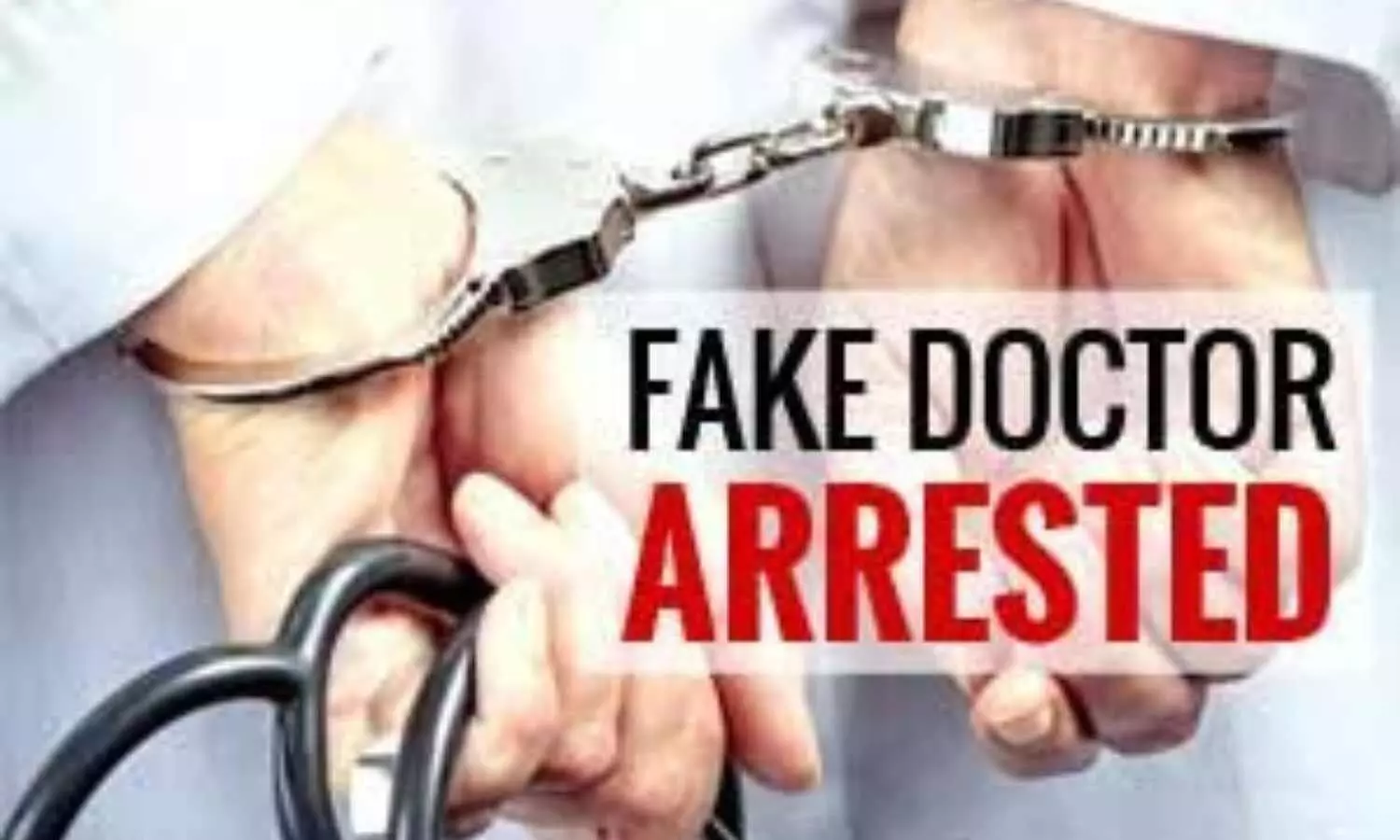
Trichy: While qualified doctors spend years studying and gaining experience, a 62-year-old woman with only a Class 12 education allegedly posed as a doctor and treated numerous patients at an illegal clinic she was running from a rented house on Irur Road in Alathur taluk.
Acting on a tip-off, the police arrested the fake doctor for allegedly running an unlicensed clinic and prescribing medicines without any medical training, putting the public’s health at serious risk.
The quack identified as V Muthulakshmi from Murugoor in Thuraiyur, had reportedly studied only up to Class 12. With only a minimal educational background, she was running the clinic from a rented house on Irur Road in Alathur taluk for several years, pretending to be a qualified doctor.
Also read- FIR against 2 doctors for forging documents to frame colleague as Quack
As per a TOI news report, the incident came to light after the health department officials received a tip-off about her illegal clinic. Based on this, Perambalur joint director of health services K Marimuthu carried out an inspection and confirmed that Muthulakshmi was treating rural patients and prescribing medicines without any proper medical training.
Following a complaint by Dr. Marimuthu, the Padalur police registered a case and arrested her. The clinic has been sealed, and an investigation is currently underway to find out more details about the case.
Medical Dialogues had previously reported that a 48-year-old woman, who allegedly posed as a gynaecologist using a fake Bachelor of Ayurveda, Medicine, and Surgery (BAMS) degree despite only having completed Class 12 education, was arrested by the Delhi Police Crime Branch after being on the run for nine years. In 2009, she administered medicines and performed a botched surgery on a pregnant woman, resulting in the patient’s death.
According to the police, the accused opened her clinic in 2008 without possessing a medical degree or license. She had worked as an assistant at a clinic in Uttam Nagar during 2005-06, where she picked up basic treatment procedures.
Also read- Class 12 pass posing as Gynaecologist nabbed after 9 years of botched surgery
Powered by WPeMatico
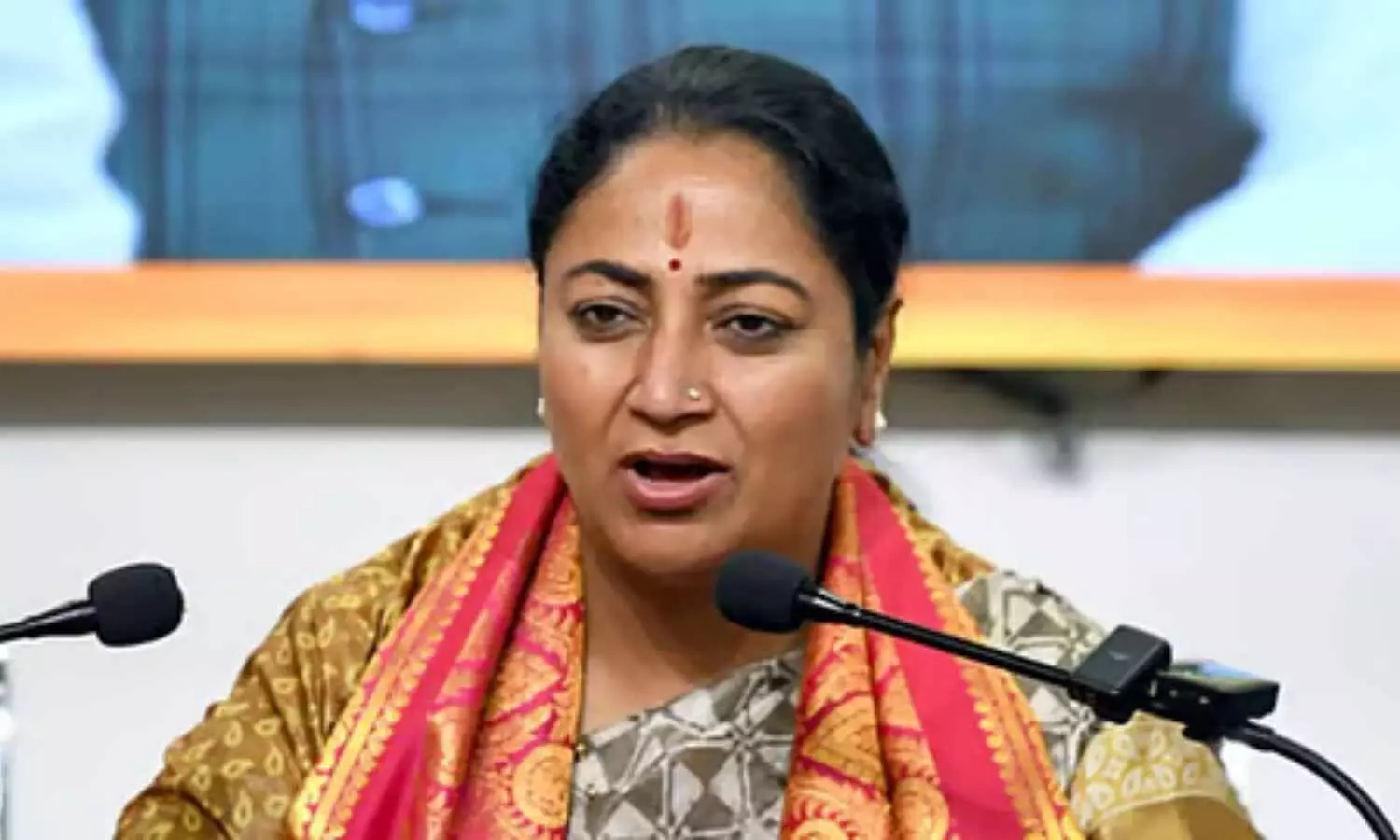
New Delhi: Delhi Government is planning to host a Global Ayurveda Conference, with participants from various countries expected to attend the event, Chief Minister Rekha Gupta announced on Thursday.
Rekha Gupta praised the efforts made to bring Ayurveda to a unified platform for the entire nation, highlighting its holistic approach to health.
She emphasized that Ayurveda can diagnose and treat illnesses simply by reading the pulse (Nadi), and its treatments are based on herbs found across the country.
“I express my gratitude to Prime Minister Narendra Modi, who, since 2014, has promoted and advanced Ayurveda,” said Gupta, adding that the establishment of the Ministry of AYUSH under Modi’s leadership was a milestone that had never occurred before. She also noted that after 27 years, the BJP’s return to power in Delhi marked Ayurveda’s revival in India, news agency ANI reported.
Also Read:Delhi to become model state for AYUSH: Health Minister
Gupta further mentioned that in this year’s budget, the Delhi government had allocated Rs 275 crore for alternative medicine and Rs 100 crore for Ayushman Bharat.
She also expressed plans to hold the Global Ayurveda Conference in Delhi, with participants from various countries expected to attend the event.
Prime Minister Modi, in his address on Tuesday, prioritised an empowerment-centric model of progress for the nation aimed at helping people to lead their lives with dignity.
Speaking at the ABP Network India@2047 Summit, PM Modi said that his government is shifting to an Gross Empowerment of People (GEP)-centric model of progress instead of a Gross Domestic Product (GDP) approach for the development of the nation.
“We have chosen a path of human-centric globalisation, where growth is not dictated solely by markets but is measured by the ability of individuals to lead lives of dignity and achieve their dreams. This represents a significant benchmark for development. Instead of pursuing a GDP-focused approach, we are shifting towards a GEP-centric model of progress–Gross Empowerment of People. This approach prioritises the empowerment and well-being of everyone,” PM Modi said at the conclave.
Emphasising how empowerment affects any individual’s life, PM Modi noted several government schemes, such as Ayushman Bharat and PM Awas Yojana, that have liberated people.
“When the poor recieve a Pukka house, then they become empowered, self-respected. When a toilet is constructed at his house, then he gets liberated from the humiliation of defecating in the open. He is relieved from a lot of stress when he receives a free treatment of Rs 5 lakh under Ayushman Bharat. There are many examples that have strengthened sensible development and empowered India’s public,” PM Modi said.
Noting the upliftment of 25 crore people from poverty, PM Modi highlighted that the BJP government has presented an example to the world that “Democracy can deliver.
“In 2014, our government was formed in such a situation when the countrymen’s trust in the government had almost broken. Some people even started raising the question whether democracy and development can go together in our country. Today, when one looks at India, one can proudly say – Democracy can deliver. In the past decade, 25 crore people have been lifted from poverty. The entire world got the message that Democracy can deliver. Small entrepreneurs who got loans through Mudra Yojana now realise that democracy can deliver,” PM Modi said.
PM Modi also highlighted government efforts to curb corruption and ensure that people benefit from every government scheme.
PM said that to ensure that people receive every rupee allocated to them for their benefits, the government made arrangements for direct benefit transfer.
“The former Prime Minister of our country had admitted that if the government sends one rupee to a poor person, 85 paise of it gets stolen. Governments kept changing, years passed, but no concrete work was done to ensure the poor got the entire money due to them. The poor should get all the money. If one rupee is released from Delhi, every penny should reach them. For this, we made arrangements for direct benefit transfer. This stopped leakage in government schemes, and the benefits reached the beneficiaries directly,” PM Modi said.
Powered by WPeMatico
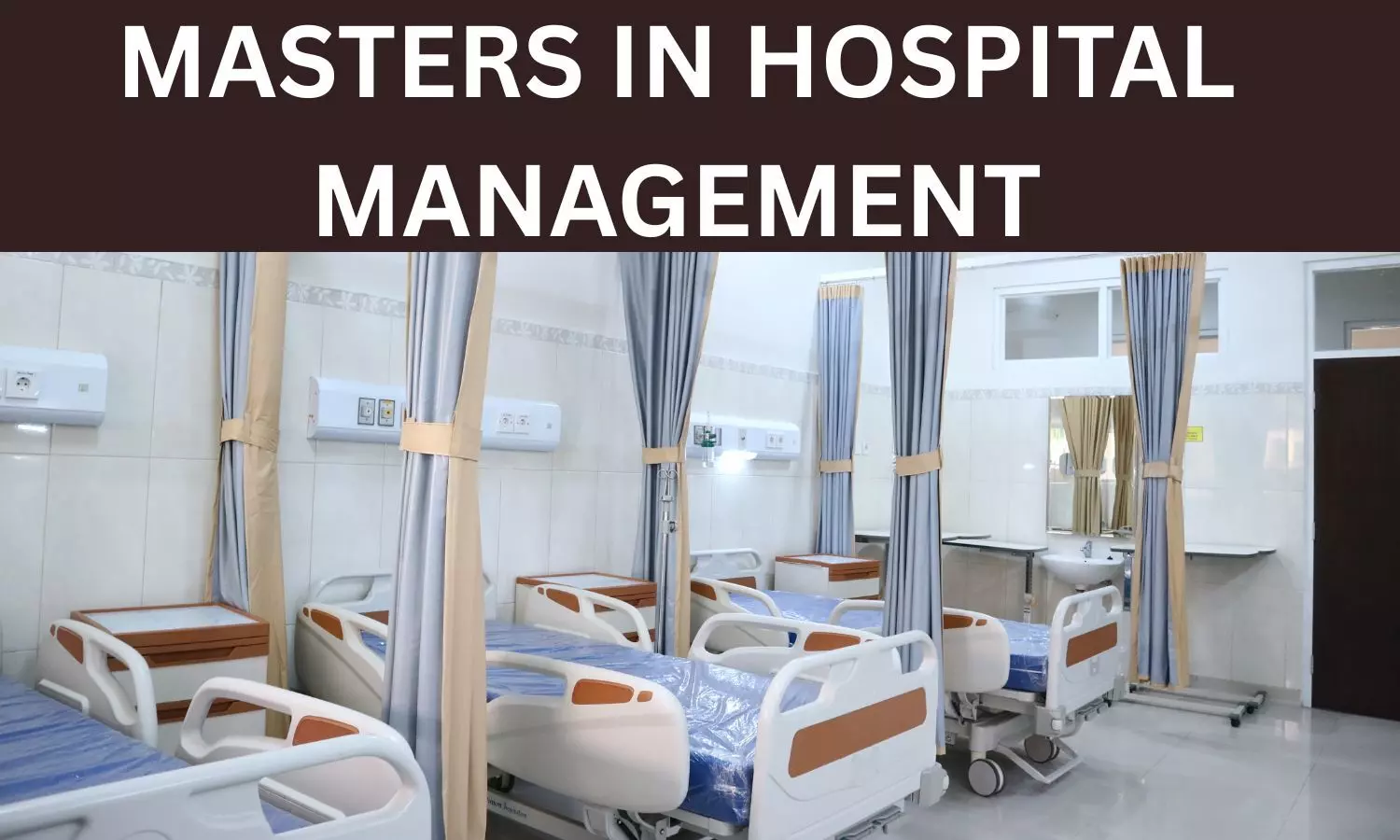
Bhopal- The All India Institute of Medical Sciences (AIIMS), Bhopal, is inviting online applications from candidates for admission into the Master’s in Hospital Management Course for the July 2025 Session. In this regard, AIIMS Bhopal has released a prospectus detailing the Key dates for the admission process, Examination pattern, Submission of Application, General Eligibility, Duration of the Course, etc.
As per the prospectus, the registration for admission into the Master’s in Hospital Management Course for the July 2025 Session has started from 10th May 2025 to 31st May 2025. Meanwhile, the Entrance Examination for admission into the said course will take place on 14th June 2025.
The result will be declared within seven working days after the conduct of the entrance exam. After the conclusion, the Course will commence from 1st July 2025.
SCHEDULE
|
S.NO |
PARTICULARS |
DATE |
|
1 |
Registration Starting Date. |
10th May 2025 |
|
2 |
Last date for submission of the form. |
31st May 2025 |
|
3 |
Admit Card Issue Date. |
Will be updated on website |
|
4 |
Date & Timing of Entrance Examination. |
14th June 2025 |
|
5 |
Entrance Examination Results Declaration. |
Within seven working days after the conduct of the entrance exam |
|
6 |
Course Commencement. |
1st July 2025 |
SUBMISSION OF APPLICATION
The application form, along with the prescribed fees, must be submitted both online and offline-
1 OFFLINE SUBMISSION- The self-attested application form must be sent in a sealed envelope by Speed Post/by Hand, latest by 31st May 2025 up to 5:00 PM to the Office of Registrar, Academic Block, AIIMS Bhopal, Saket Nagar, Bhopal (MP) – 462020.
2 ONLINE SUBMISSION- The application form must also be uploaded through the link given in the prospectus. However, AIIMS Bhopal shall not be responsible for any postal delay.
APPLICATION FEES
1 For General /OBC/EWS candidates Rs. 1000/-.
2 SC/ST/PwBD/Women Candidate – Nil.
3 Fees to be paid by Demand Draft only in favour of “Executive Director AIIMS Bhopal payable at Bhopal.
4 Fee once remitted will not be refunded under any circumstances. Inadequately filled/ incomplete applications will be rejected.
GENERAL ELIGIBILITY
The candidates must have completed a minimum of 3 years of regular bachelor’s degree from a recognised University with at least 50% marks in aggregate. (BA, B.Sc., B. Com, BCA, B.Tech, BE, BPT, MBBS, BDS, B.Sc. Nursing, BAMS, BYMS, BHMS or equivalent).
1 Candidates possessing a Degree through a distance learning course shall not be eligible.
2 Candidates working under Central Govt./Semi Govt./Autonomous organisation should submit their applications through the proper channel, i.e. employer. They will be required to submit a ‘No Objection Certificate’ from their employer along with the application form before they are allowed to appear for the selection process on the MHM Course.
3 The candidates must have appeared for the final degree awarding examination, including practical, project, and viva voce as applicable, on or before the closing date of the application. Copy of the Degree to be submitted at the time of admission.
Number of Seats
Annual one-time admission process (July Session) with 6 seats (UR-2, OBC-2, SC-1, and EWS-1).
DURATION OF COURSE
Two years full-time course with hospital postings, classroom lectures, seminars, assignments, internship and project/dissertation work constitutes an important component of the course.
The students undergo extensive hands-on training with rotational posting in different sections/ departments of AIIMS Bhopal, which is an Institute of national importance with a 960-bed quaternary care attached hospital with a matching curriculum.
EXAMINATION PATTERN
|
S.NO |
PARTICULARS |
PATTERN |
|
1 |
Mode/Type of Examination. |
Offline Objective Type |
|
2 |
Duration of Examination. |
2:00 Hrs |
|
3 |
Date of Examination. |
14th June 2025 |
|
4 |
Timing of Examination. |
Written Exam: 10:30 A.M to 12:30 P.M Reporting Time: 9:00 A.M |
|
5 |
Location of Examination Centre. |
Sardar Vallabh Bhai Patel Bhavan (Medical College Building), AIIMS Bhopal. |
|
6 |
Type of Examination. |
Written Exam (MCQ: Maximum Marks: 100) |
|
7 |
Total Marks. |
100 |
|
8 |
Distribution of Questions. |
As in the Prospectus |
|
9 |
Cut-Off for Eligibility. |
50 per cent (%) of marks to be eligible for admission. |
|
10 |
Method of resolving a tie/case. |
The tie case will be resolved according to written marks and if unsolved will be resolved according to age (Date of birth), the older candidate shall get preference over the younger one. If the tie is still not resolved, it will be resolved on the basis of the marks of class X. |
To view the prospectus, click the link below
Powered by WPeMatico

According to a new research Preoperative Use of SGLT2 inhibitors was associated with a modestly increased risk of postoperative euglycemic ketoacidosis (eKA), but also with reduced risks of acute kidney injury (AKI) and 30-day postoperative mortality.
Case reports and small retrospective studies have suggested that there is an increased risk of postoperative euglycemic ketoacidosis (eKA) and acute kidney injury (AKI) among patients using sodium-glucose cotransporter 2 inhibitors (SGLT2i) preoperatively. However, there has not been a representative assessment of the risks of these agents among patients undergoing surgery. A study was done to evaluate the risk of postoperative eKA, AKI, and mortality within 30 days after surgery among preoperative long-term SGLT2i users compared with nonusers. This is a multicenter, propensity-matched, retrospective case-control study from the Veterans Affairs Health Care System (VAHCS) National Registry performed from January 1, 2014, to December 31, 2022. Adult patients using SGLT2i preoperatively who underwent inpatient surgical procedures were compared with a 1:5 matched control group using propensity score matching, including the patient’s demographic characteristics, comorbidities, and surgical characteristics. Data analysis was performed from June 2023 to August 2024. Long-term use of SGLT2i, defined as having more than 3 fills of outpatient prescription or less than a 180-day gap of the last fill according to the VAHCS pharmacy registries. The primary outcome was the rate of postoperative eKA among SGLT2i users vs control patients. Secondary outcomes included postoperative AKI and 30-day mortality after surgery. Results Among 462 968 patients undergoing surgery, 7448 SGLT2i users (mean [SD] age, 67.7 [8.1] years; 7204 [96.7%] male) and 455 520 nonusers (mean [SD] age, 65.8 [11.0] years; 424 785 [93.3%] male) were identified. After propensity score matching, 7439 patients were identified as SGLT2i users and compared with 33 489 control patients. SGLT2i use was associated with an increased risk of eKA (odds ratio [OR], 1.11; 95% CI, 1.05-1.17) but reduced risks of perioperative AKI (OR, 0.69; 95% CI, 0.62-0.78) and 30-day mortality (OR, 0.70; 95% CI, 0.55-0.88). The mortality rate 30 days after surgery was 1.1% among SGLT2i users vs 1.6% among control patients. The median hospital length of stay among the patients presenting with eKA increased by 3 days (median [IQR], 6 [3-10] days for those with eKA vs 3 [2-6] days for those without eKA). Patients treated with SGLT2i had a small but significantly higher risk of postoperative eKA but lower risks of postoperative AKI and 30-day mortality.
Reference:
Tallarico RT, Jing B, Lu K, et al. Postoperative Outcomes Among Sodium-Glucose Cotransporter 2 Inhibitor Users. JAMA Surg. Published online April 30, 2025. doi:10.1001/jamasurg.2025.0940
Keywords:
SGLT2, Inhibitors, use, tied, Risk, Postoperative, euglycemic, ketoacidosis, Lower, AKI, Mortality, JAMA , Tallarico RT, Jing B, Lu
Powered by WPeMatico
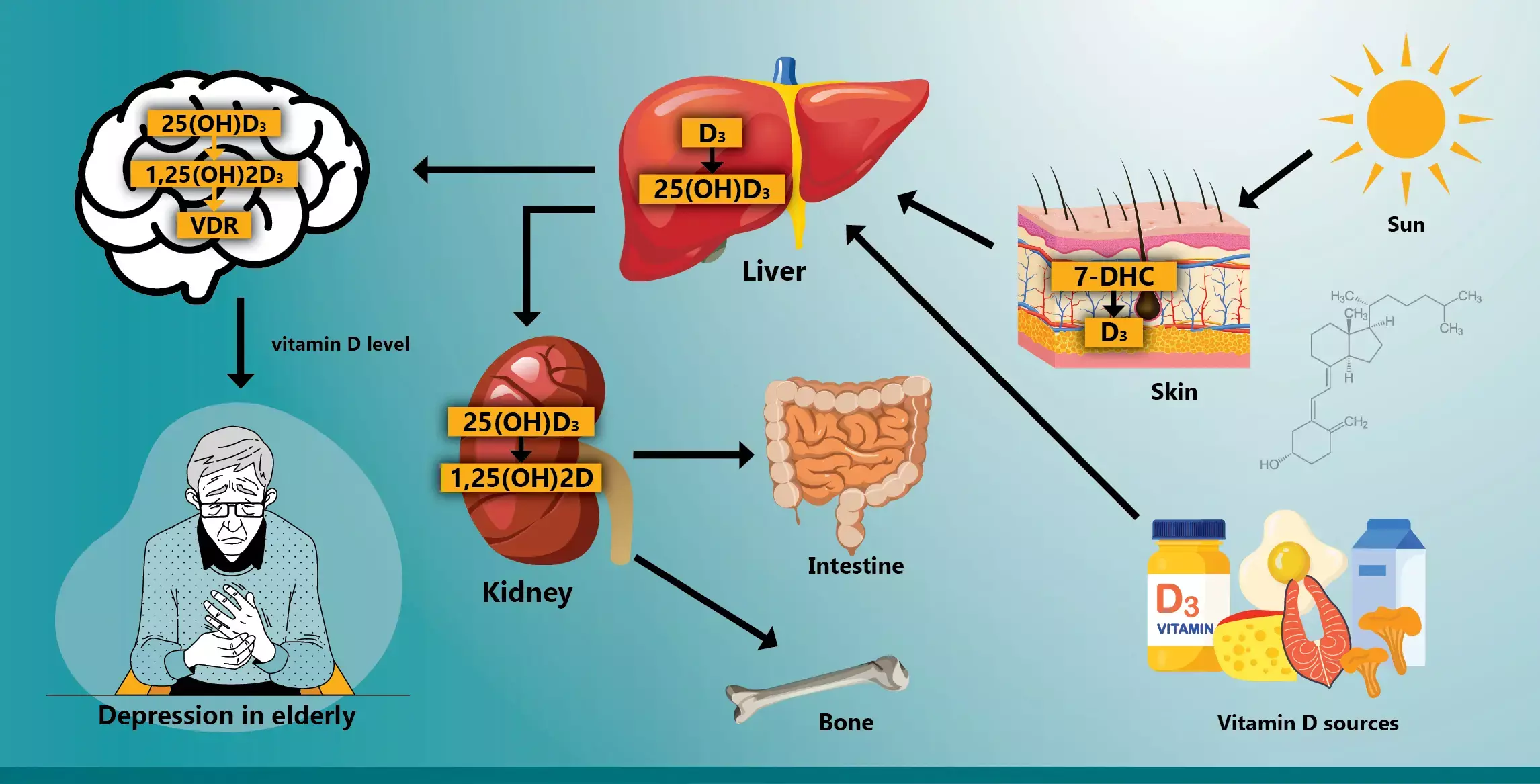
Research indicates that higher dietary intake of vitamin D is associated with improved cognitive performance and reduced depressive symptoms in older adults. While these findings are promising, further longitudinal studies are necessary to confirm a causal relationship and understand the biological mechanisms involved.
Vitamin D is known to have a potential impact on cognitive function and mental health. This study aims to assess the association between dietary vitamin D intake and cognitive performance, as well as depression, in an elderly U.S. population. Data from the National Health and Nutrition Examination Survey (NHANES) 2013-2014 were analyzed. A total of 1,344 elderly participants were categorized into three tertiles based on their dietary vitamin D intake (D2 + D3). Cognitive function was measured using the Consortium to Establish a Registry for Alzheimer’s Disease (CERAD) test, Digit Symbol Substitution Test (DSST), and Animal Fluency Test, while depression was assessed through the Patient Health Questionnaire-9 (PHQ-9). Adjustments were made for confounding variables, including age, sex, race, education, physical activity level, and other dietary factors. Results: After adjustment for confounders, individuals in the 3rd tertile of vitamin D intake (≥4.9 mcg/day) had significantly reduced odds of low performance on the CERAD test (OR: 0.77, 95% CI: 0.57-0.98; p = 0.031) and Animal Fluency test (OR: 0.63, 95% CI: 0.49-0.85; p = 0.013) compared to the 1st tertile of intake (≤2.4 mcg/day). Similarly, participants in the 3rd tertile of vitamin D intake had lower odds of depression (PHQ-9 score > 4) after adjustment (OR: 0.68, 95% CI: 0.48-0.99; p = 0.046). The findings suggest that dietary vitamin D intake is associated with improved cognitive function and depressive symptoms in elderly individuals. However, further longitudinal studies are needed to establish causality and explore the underlying mechanisms.
Reference:
Chen H, Pang X, Huang Y. Higher dietary vitamin D intake influences brain and mental function in elderly Americans: a cross-sectional analysis. Front Nutr. 2025 Apr 9;12:1564568. doi: 10.3389/fnut.2025.1564568. PMID: 40271436; PMCID: PMC12016215.
Keywords
Dietary, Vitamin D, Linked, Better, Cognitive, Function, Mood, Elderly, Chen H, Pang X, Huang Y, NHANES; cognitive function; depression; elderly; vitamin D.
Powered by WPeMatico
